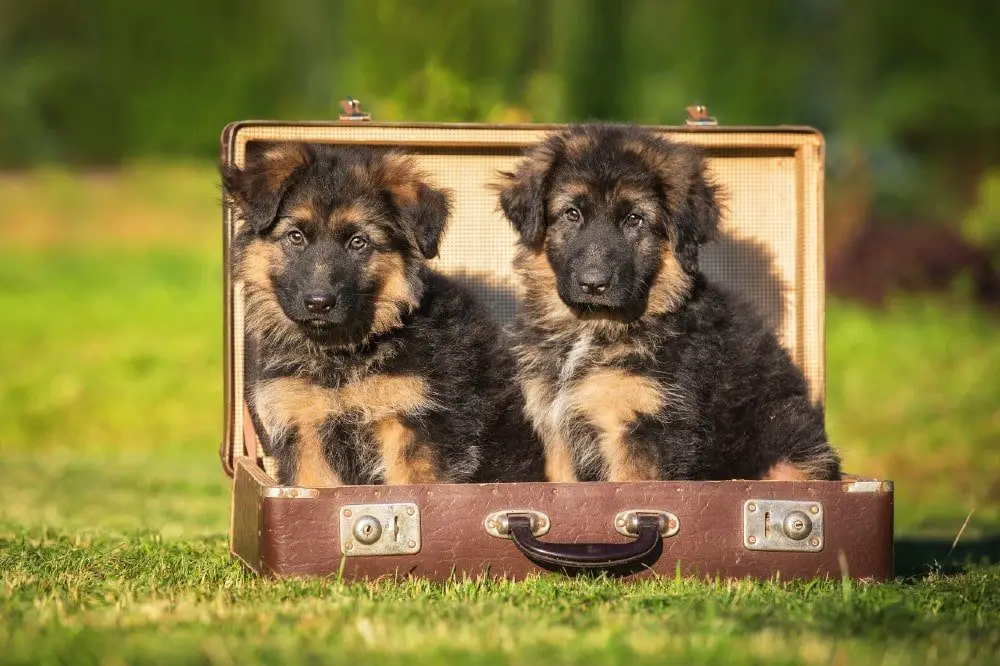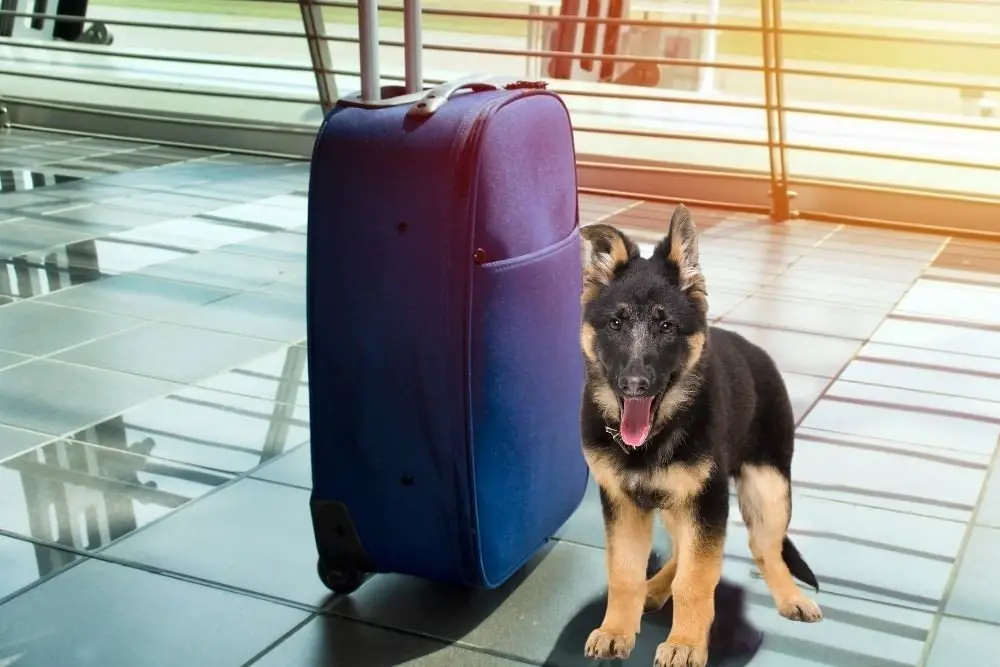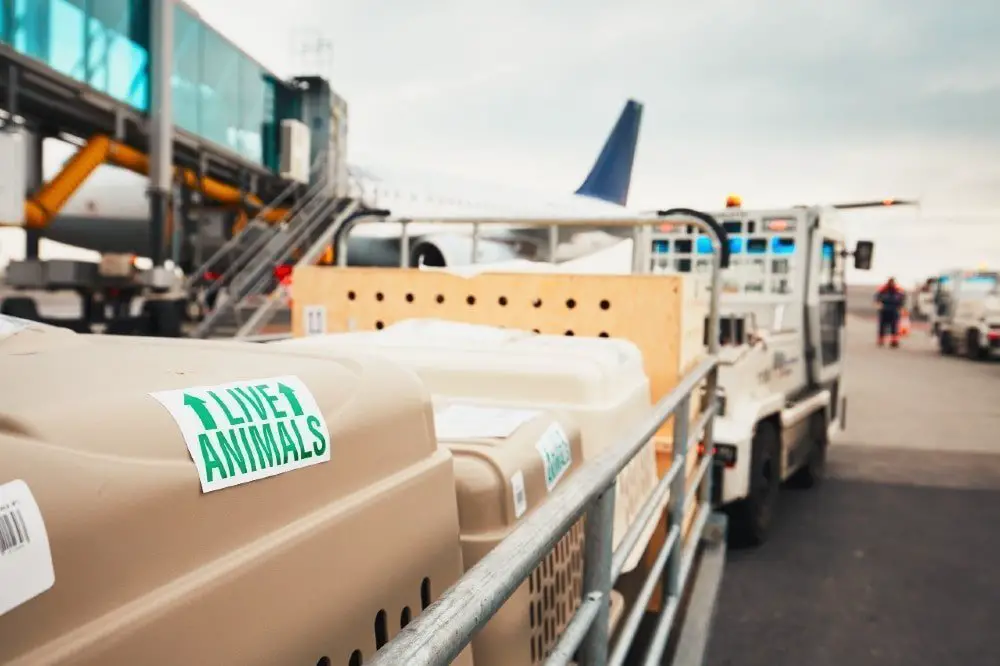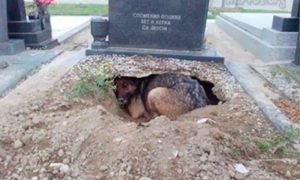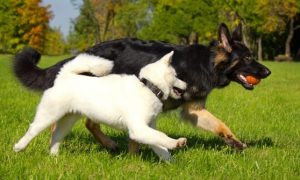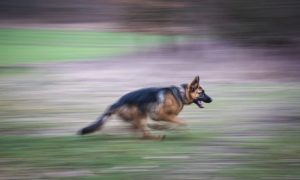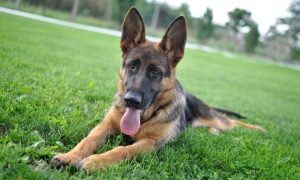How to Fly with a New Puppy
Have you found the perfect puppy, but they are located in another state? Are you debating whether you want to drive multiple days one-way to pick it up?
There is always the option of flying your pup in cargo but flying with a puppy in the cabin is easier than you think.
When it comes to transporting your pup via the friendly skies, it’s important to do your research and be over-prepared.
Below are tips and tricks on flying with a puppy in the cabin.
7 Things You Need to Know Before Booking a Flight
Before booking a flight, you need to check the airline’s pet requirements. Rules and fees will vary from airline to airline.
1. Puppy Age Requirement
Some airlines require your pup to be 10-weeks-old, and others are fine with 8-weeks-old.
A way to get around your 8-week-old puppy not being eligible to fly is to ask your breeder or vet if they will list your pup’s age at 10-weeks-old on their health certificate.
2. Is a Health Certificate Required?
The answer to this is most likely yes, but it doesn’t hurt to double-check.
A health certificate declares your puppy was examined by a veterinarian within the past ten days and is deemed healthy and fit to fly. The certificate is for liability reasons for the airlines.
A good breeder that knows a puppy is flying will obtain the health certificate for you. Otherwise, it will be your responsibility to coordinate this with a veterinarian.
You may be asked for your puppy’s health certificate during the check-in process or at TSA. Then again, you might not be. Just be prepared.
3. What Vaccinations are Required?
Rabies vaccination is standard for puppies over 16 weeks.
4. Puppy Weight Limits
The average weight limit to fly with a dog in cabin is 25 pounds. A large breed puppy that is a few months old will meet this requirement with ease.
5. What are the Size Dimensions for a Puppy’s Carry-On Carrier?
Verify the maximum size pet carrier with the airline you are booking with.
A popular soft-sided airline-approved carrier is the Large Sherpa Pet Carrier. It measures 19” x 11.5 by 11.75 and is well ventilated.
6. What are the Flight Fees for a Puppy?
The cost to fly your puppy in the cabin ranges between $95.00 and $125.00 one way in 2021.
7. How Do I Book a Flight for a Puppy?
Airlines limit how many animals per flight. You definitely want to secure your puppy’s spot in advance.
Some airlines give you the option of adding your pet to your flight when you book online. Other airlines require a phone call to secure a pet reservation.
Confirm your puppy’s reserved spot and have that documentation with you when you check in.
Flying with a Puppy Packing List
Items you need to pack on the day of your flight:
- Collar, tag, and leash
- Health certificate
- Airline approved pet carrier
- Pee pads for the bottom of the carrier
- An old towel in the pet carrier (optional)
- A small towel to cover the pet carrier
- A collapsible bowl for food and water
- Extra food in a ziplock bag just in case
- Chews and treats
- A silent chew toy
- Poop bags
- Grocery size bags for garbage
- Paper towels
- Clorox wipes
- Pet wipes
- Baby wipes
10 Tips and Tricks when Flying with a Puppy
1. Get Your Puppy Used to the Carrier as Much as Possible
The more comfortable they are in the carrier the easier your trip will be. A good breeder who knows a puppy is going to fly home will introduce them to a crate before you pick them up.
2. Arrive Early for Your Flight
Allow plenty of time for traffic, check-in, and TSA.
You have to check-in at the airline counter with pets physically. Most airlines do not allow you to pay for your pet online, so have your credit card ready.
3. Mark Your Property
Your puppy should never be out of arm’s reach, but you should still have a tag on your puppy’s collar with their name and your phone number. Also, tag their pet carrier with your information.
4. Getting Through TSA
Once you and your pup have checked in, airport security is next.
Whether you have TSA pre-check or not, you have to remove your pup from their carrier. Place the carrier on the belt with your other belongings to go through the x-ray machine.
You will carry your puppy through the metal detector. Don’t worry about removing your pup’s leash or collar.
Some airports require TSA to swab your hands, and some don’t. No biggie if they do.
Don’t be shocked if you get some extra attention going through TSA. Not because you are suspicious looking, it’s because you have a puppy that people will ooh and aww over.
5. Keep Your Pup in their Carrier
After you clear TSA, put your pup back in their carrier and keep them there as much as possible.
You will navigate the airport much faster and draw less attention.
6. Food and Water
What goes in comes out within a few hours or less in a puppy. Be conscious of this.
Ideally, you want your puppy to have pooped before you get to the airport. Plan ahead.
Keep treats to a minimum and restrict water intake.
Monitor your food and beverage intake as well. Getting up to use the restroom during your flight will most likely wake or disturb your pup.
This disturbance could lead to crying, whining, or barking. Use the restroom before boarding the plane to avoid upsetting your puppy.
7. Pottying in the Airport
Whether it’s before your flight, after your flight, or in-between flights, your pup may need to relieve themselves.
Airports have designated potty areas for dogs, but there is no need to seek these out. They are usually somewhat gross, and there is a better alternative for a puppy.
Take your pup into a stall bathroom, remove them from their carrier, and encourage them to go on the floor.
If other people are in the bathroom area, don’t worry about it. It’s more than likely they aren’t paying attention to what’s happening in your stall.
If your puppy relieves itself, deposit poop in the toilet and use toilet paper to soak up the urine. Then use a Clorox wipe to clean the floor.
Don’t forget to praise your puppy!
8. Killing Time with a Puppy
If you arrive early at the airport or have a layover, you will have time to kill before boarding your flight.
Now is the time to get your pup out of the carrier and entertain them. The goal is to keep them awake and active, so they will, hopefully, sleep during the flight.
9. Flying in Cabin with a Puppy
If the airline offers first-class and you can afford it, book it. First-class seating gives you more legroom, less hustle and bustle, and gets you off the plane first.
Regardless of what you book, legroom may be cramped if you’re tall.
If possible, get a window seat to keep movement and distractions to a minimum.
Place the pet carrier as far as you can under the seat in front of you. The large Sherpa Pet Carrier will not fit all the way under the seat in economy. There’s nothing you can physically do about it, and most airline staff won’t make it an issue.
Use a towel to cover the top and one side of the pet carrier to reduce your puppy’s visual stimulation while everyone is boarding.
Keep your puppy in their pet carrier once you board the plane. The flight staff and other passengers may not be as enamored with a puppy as you are, so don’t be that person.
Have a toy or a chew ready to give your puppy if they start to fuss in their carrier.
If you kept your puppy awake and busy before the flight, they will hopefully sleep once the plane takes off.
If your puppy is whining, crying, or barking, there isn’t a lot you can do if toys and treats don’t distract them.
Try to stay as relaxed as possible. If you become stressed, tense, upset, or anxious, your puppy will sense this and become more agitated.
Hopefully, those seated around you will understand and be gracious.
10. Handling a Potty Accident on the Plane
The best-laid plans can still result in accidents. Don’t get upset or be embarrassed.
If your puppy pees, the pee pad, and towel will soak it up. You may not even know when it initially happened. Wait until you land to deal with clean-up.
If your puppy poops, you and everyone around you will know. Carefully extract your puppy from the carrier and use pet wipes to clean paws or any part of your pup that has come in contact with poop.
Use a poop bag to scoop up the poo and tie up the bag. Pull out the pee pad and old towel if necessary.
Use baby wipes to clean your hands, place everything into a garbage bag, and put your puppy back into their carrier.
Ring for a flight member to take the bag and apologize to those around you.
Don’t worry about replacing the pee pad. The most important thing you want to do is remove the unpleasant smell of poo as soon as possible.
The reason for an old towel versus nice bedding in your pup’s pet carrier? If accidents happen, you can toss out an old towel and move on.
After departing the plane, you can tend to potty clean-up if needed.
Here are some airport clean-up tips:
- Use pet wipes or a bathroom sink to spot clean your puppy
- You can use the towel for covering your pup’s carrier to dry off a wet puppy
- Hand dryers in the bathroom are also handy to dry off a damp pup
- Spot clean the pet carrier where needed with Clorox wipes
- Replace the pee pad
This article’s primary focus is flying in the cabin with a puppy. However, all of the tips and tricks listed apply to anyone with a small breed dog.
Flying a Puppy in Cargo
Many of us cringe at the thought of flying a puppy by themselves in cargo. However, people do it every single day without problems.
If you cannot travel to pick up a new puppy, shipping them in cargo is an option.
Every airline has different requirements, check-in procedures, and prices, so do your research to find an airline that will fit your needs but below is some general information.
Puppy Cargo Regulations
Every airline has restrictions for flying a dog in cargo during hot or cold weather for safety purposes.
The minimum age requirement to fly a puppy in cargo is the same as flying with a puppy in the cabin.
Typically eight weeks to ten weeks old, depending on the airline.
There is no weight limit to fly a dog in cargo. However, larger dogs may cost more.
A health certificate is required, as are vaccinations the airline requires.
Hard-sided crates are required to ship a puppy or dog in cargo. Check with the airline for specific requirements like size, identification, food, toys, pads, etc.
Some airlines do not allow certain breeds, like snub-nosed dogs, to fly in cargo. Examples of snub-nosed breeds include bulldogs, pugs, boxers, etc.
Flying with a puppy requires planning, but the tips and tricks listed above give you a head start on what you need to do, what you need to buy and pack, and what to expect to make flying with a puppy as smooth as possible.
🐾🐾🐾🐾🐾
Commission Disclosure – Articles on German Shepherd Country are for education or entertainment purposes. We hope you find the information helpful! We may earn a small commission (at no extra cost to you!) if you shop through links on this page.


